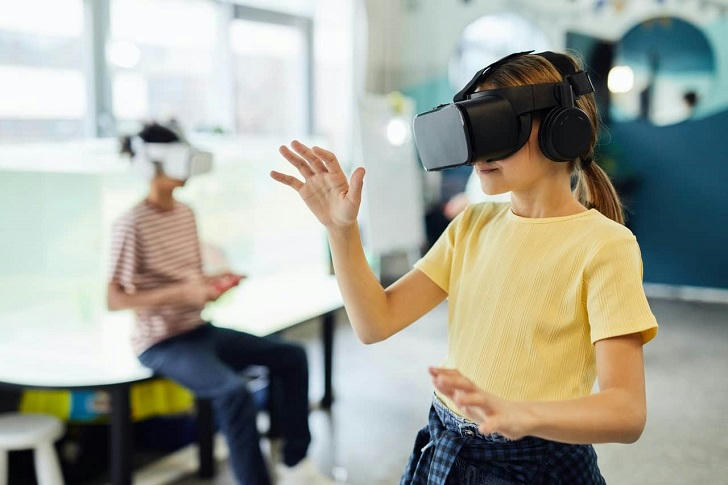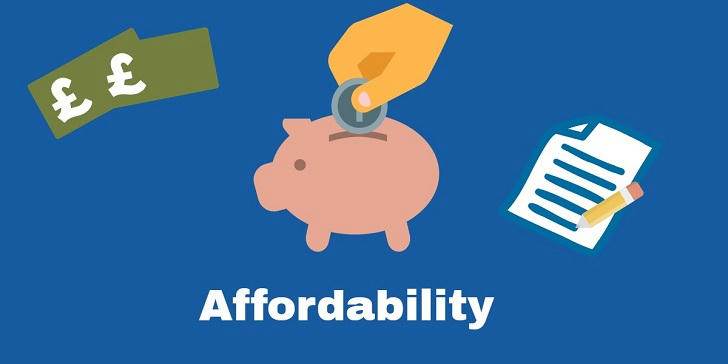Virtual Reality Enhances Remote Educational Experiences
Online education in the United States has come a long way—from basic video lectures to dynamic, interactive learning environments. One of the most exciting developments in recent years is the use of Virtual Reality (VR) to create immersive educational experiences. As the demand for effective and engaging online learning continues to rise, VR is emerging as a transformative tool, reshaping how students learn across disciplines and age groups.
What Is Virtual Reality in Education?
Virtual Reality in education refers to using computer-generated simulations to place learners in a 3D environment where they can interact with digital objects and surroundings. These simulations can be experienced using VR headsets like Meta Quest, HTC Vive, or even budget-friendly mobile-based viewers such as Google Cardboard.
Rather than watching a passive video, learners become active participants—exploring historical landmarks, practicing surgeries, or conducting chemistry experiments in a virtual lab. This kind of immersion helps bridge the gap between theory and real-world application.
Why VR Matters in Online Education
While traditional online learning has made education more accessible, it often lacks the depth of engagement found in face-to-face settings. VR addresses this by:
- Increasing engagement: Students are more likely to retain information when they interact with it.
- Improving understanding: Complex concepts like physics simulations or human anatomy are easier to grasp in 3D.
- Reducing distractions: VR minimizes outside interruptions by fully immersing learners in the lesson.
According to a 2024 report by EDUCAUSE, 61% of American higher education institutions have either piloted or fully implemented VR-based learning in at least one department.

Popular Subjects Embracing VR
In the U.S., a wide range of educational programs now integrate VR components, including:
- Healthcare and Medicine: Nursing students perform virtual diagnostics and surgical procedures, practicing without real-world risks.
- STEM Fields: Physics students visualize particle behavior or explore space simulations, while engineering students test virtual prototypes.
- History and Social Studies: Learners visit historical sites like the Gettysburg Battlefield or ancient Rome without leaving home.
- Vocational Training: Automotive, plumbing, and HVAC students practice troubleshooting systems in a simulated environment.
The immersive nature of VR helps students build confidence before handling real tools or facing real patients or clients.
Case Study: Arizona State University
Arizona State University (ASU), one of the leaders in online education, has introduced VR into several of its online science programs. Students use headsets to conduct lab experiments in physics and biology. The result: improved test scores and significantly higher student satisfaction compared to traditional video-based labs.
In 2025, ASU reported that 82% of students using VR tools felt “better prepared” for hands-on courses and future employment.

Accessibility and Affordability
Until recently, the high cost of VR equipment was a barrier for widespread adoption. But with falling hardware prices and the introduction of standalone, affordable headsets (such as Meta Quest 3), VR learning is becoming more accessible.
Several U.S. public school districts and community colleges have started receiving federal and state grants to incorporate VR into classrooms and remote education platforms. Companies like zSpace and Labster offer all-in-one VR solutions tailored for schools, often with student-friendly pricing or licensing.
Moreover, platforms such as Coursera and edX have begun experimenting with VR modules for specific courses, especially in technical fields.
Enhancing Learning for K–12 Students
In the K–12 sector, VR is gaining ground as a tool to excite young learners and make abstract concepts more tangible. For instance:
- In Florida, middle school students are using VR to explore ecosystems and weather patterns.
- In California, high school students visit the International Space Station virtually as part of a STEM enrichment program.
Teachers report increased attention spans and participation from students who were previously disinterested in science or history classes.
Addressing Challenges
Despite its benefits, VR in education also poses challenges:
- Motion sickness: Some users experience discomfort during long sessions.
- Tech literacy: Students and teachers may need training to use VR tools effectively.
- Connectivity: High-speed internet is often required for streaming high-quality VR content.
To address these issues, schools and institutions are providing orientation sessions, technical support, and downloadable offline content to ensure smoother adoption.

Scholarship and Grant Opportunities
With VR becoming a key component of modern education, several scholarship programs now specifically fund students pursuing VR-enabled programs or degrees in educational technology:
- The Future of Learning Grant offers up to $5,000 for students enrolled in VR-integrated online programs.
- Meta for Education provides funding and hardware to public institutions using VR to promote STEM education.
- The National Science Foundation (NSF) has increased investments in immersive learning research grants, benefiting U.S.-based educators and students alike.
These initiatives are making it easier for economically disadvantaged students to benefit from cutting-edge learning technology.
Looking Ahead
As VR technology continues to evolve, expect even more sophisticated learning experiences. Features like haptic feedback, multi-user classrooms, and AI-powered tutoring are on the horizon, offering a glimpse into the future of education.
By 2030, experts predict that over 40% of online degree programs in the U.S. will include VR-based modules as a standard component. With major players like Google, Microsoft, and Apple investing in educational VR, the transformation is just beginning.
Final Thoughts
Virtual Reality is not just a novelty in American education—it’s an evolution. It brings emotion, context, and interaction to online learning, enhancing both outcomes and enjoyment. For students, teachers, and institutions alike, VR offers a path to more meaningful and impactful education in an increasingly digital world.
